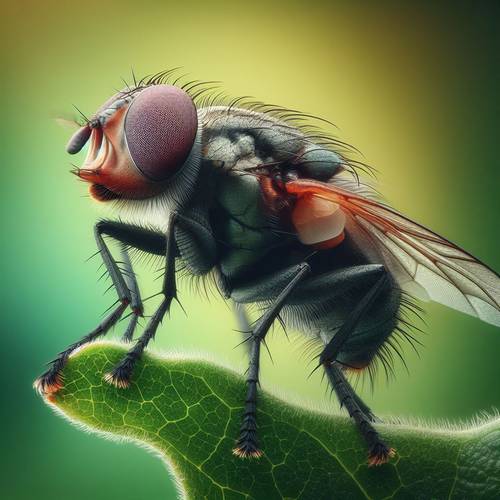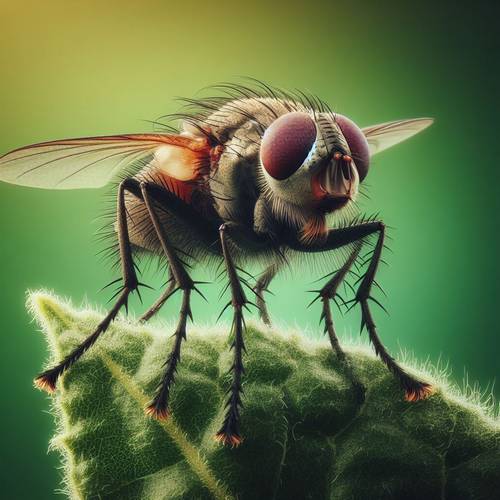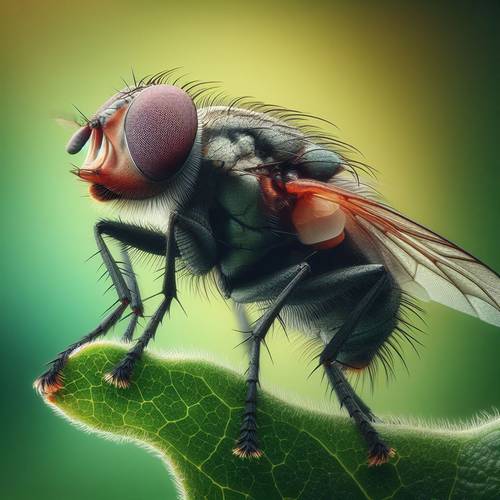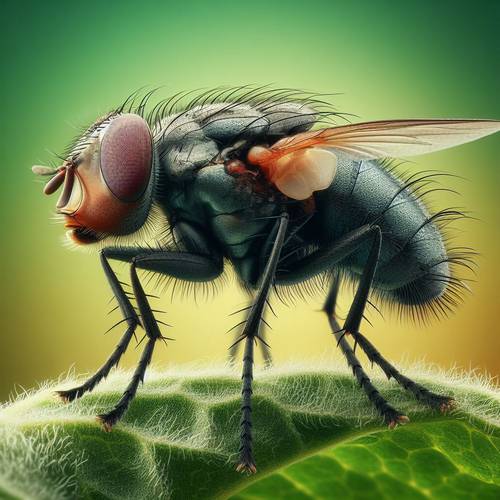Egg Stage
Houseflies embark on their life journey starting as minuscule eggs, usually deposited in decaying organic matter. A single female housefly, driven by an innate instinct for reproduction, can lay up to an astonishing 500 eggs within her short lifespan. These tiny, oval-shaped eggs, barely discernible to the human eye, typically hatch within a mere 12 to 24 hours, contingent upon prevailing environmental conditions such as temperature, humidity, and the nutrient-richness of the substrate in which they are laid. It's fascinating to note that the size of the egg correlates with the size of the adult fly it will develop into, with larger eggs typically producing larger adult flies.
Larval Stage
Following the hatching phase, Domestic fly larvae, commonly referred to as maggots, emerge voraciously hungry, with an insatiable appetite for decaying organic substances. These larvae exhibit remarkable growth rates, undergoing multiple molting phases within a span of just a few days.
Each molt signifies a stage of development, gradually increasing their size and preparing them for the subsequent phases of their life cycle. During this larval stage, the maggots play a vital ecological role as decomposers, breaking down organic matter and contributing to nutrient cycling in their environment.
Each molt signifies a stage of development, gradually increasing their size and preparing them for the subsequent phases of their life cycle. During this larval stage, the maggots play a vital ecological role as decomposers, breaking down organic matter and contributing to nutrient cycling in their environment.
Pupal Stage
As larvae reach their maximum size, they instinctively seek out sheltered, dry environments conducive to pupation. This pivotal stage marks a remarkable transformation, wherein larvae metamorphose into adult houseflies. The pupal stage is characterized by the formation of a protective outer casing, known as the puparium, within which the larva undergoes metamorphosis.
During this time, the larva's body undergoes profound changes as it develops the structures and organs necessary for life as an adult fly. Once fully developed, the adult fly emerges from the puparium, ready to embark on its role in the ecosystem.
During this time, the larva's body undergoes profound changes as it develops the structures and organs necessary for life as an adult fly. Once fully developed, the adult fly emerges from the puparium, ready to embark on its role in the ecosystem.
Adult Stage
Upon emerging from their pupal casings, adult houseflies swiftly assume their roles as prolific reproducers and scavengers. With a frenetic energy, they tirelessly seek out mates and food sources to sustain their brief existence. On average, adult houseflies live for a mere 15 to 30 days, with their lifespan subject to considerable variation influenced by a myriad of factors including environmental conditions, genetic predispositions, and the availability of suitable habitats. Interestingly, female houseflies tend to live longer than males, primarily due to their reduced energy expenditure in mating behaviors.






